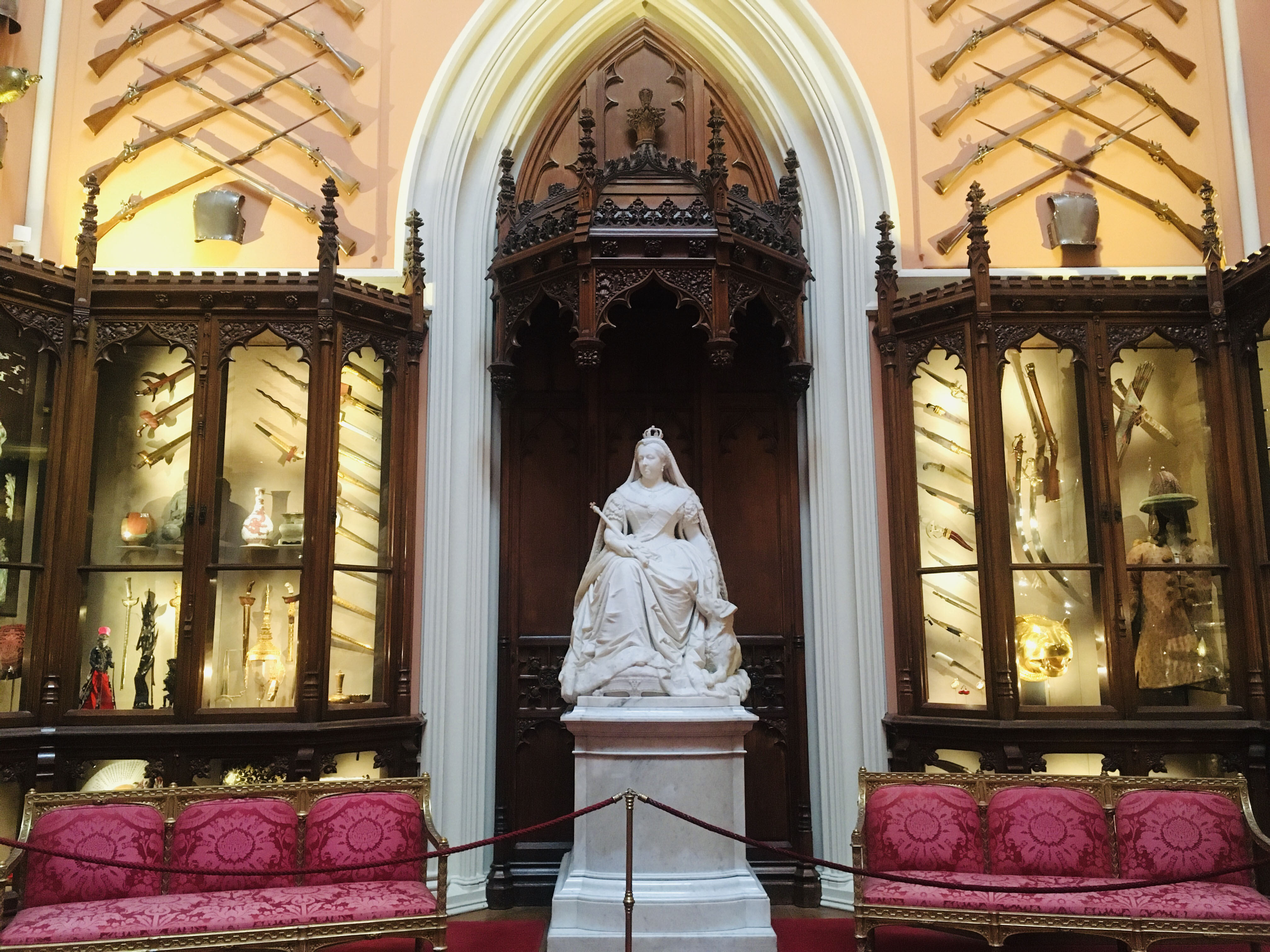
Grand Vestibule: The British Monarchy and the World
The Grand Vestibule at Windsor Castle reflects interaction between the monarchy and the wider world
INDIAN
Tiger's head
1785-93RCIN 67212
A gold tiger's head ornament from Tipu Sultan's throne, made from gold sheet over a wooden core, with finely chased and punched decoration, set with rock crystal eyes, rock crystal teeth and an articulated gold tongue, the mouth open as if roaring. The head rests on two large paws, on a square wooden plinth base covered in red velvet with four gilt metal ring handles. The front of the plinth has a rectangular presentation plaque.
Tipu Sultan (1750-99) succeeded his father, Haidar Ali, as ruler of the South Indian state of Mysore in 1782, building a sophisticated and modern court around his palace at Seringapatam. For much of his reign he was engaged in hostilities against the British. This tiger's head was the centrepiece of an octagonal throne which was made for Tipu but which he may never have used. Every part was covered in sheet gold 2 millimetres thick and some of the individual parts were set with rubies and diamonds, although the large head itself shows no evidence that it was ever jewelled. Although the tiger was an ancient symbol of kingship in India, Tipu made it his own; he declared that it was 'better to live a single day as a tiger than a thousand years as a sheep'.
The British signed a peace treaty with Tipu in 1792 but the discovery of secret communications with Napoleon brought about a renewed campaign against him, culminating in Tipu's death during the sack of Seringapatam in 1799. The golden throne was broken up and distributed to the troops, but the most important elements were brought back intact. The tiger's head was presented to William IV by the East India Company in 1831.
The silver-gilt inscribed base was made by the London silversmith, Paul Storr. The paws of gilded copper were added in 1875.
Catalogue entry from "Gold", London, 2014.
Tipu Sultan (1750-99) succeeded his father, Haidar Ali, as ruler of the South Indian state of Mysore in 1782, building a sophisticated and modern court around his palace at Seringapatam. For much of his reign he was engaged in hostilities against the British. This tiger's head was the centrepiece of an octagonal throne which was made for Tipu but which he may never have used. Every part was covered in sheet gold 2 millimetres thick and some of the individual parts were set with rubies and diamonds, although the large head itself shows no evidence that it was ever jewelled. Although the tiger was an ancient symbol of kingship in India, Tipu made it his own; he declared that it was 'better to live a single day as a tiger than a thousand years as a sheep'.
The British signed a peace treaty with Tipu in 1792 but the discovery of secret communications with Napoleon brought about a renewed campaign against him, culminating in Tipu's death during the sack of Seringapatam in 1799. The golden throne was broken up and distributed to the troops, but the most important elements were brought back intact. The tiger's head was presented to William IV by the East India Company in 1831.
The silver-gilt inscribed base was made by the London silversmith, Paul Storr. The paws of gilded copper were added in 1875.
Catalogue entry from "Gold", London, 2014.







